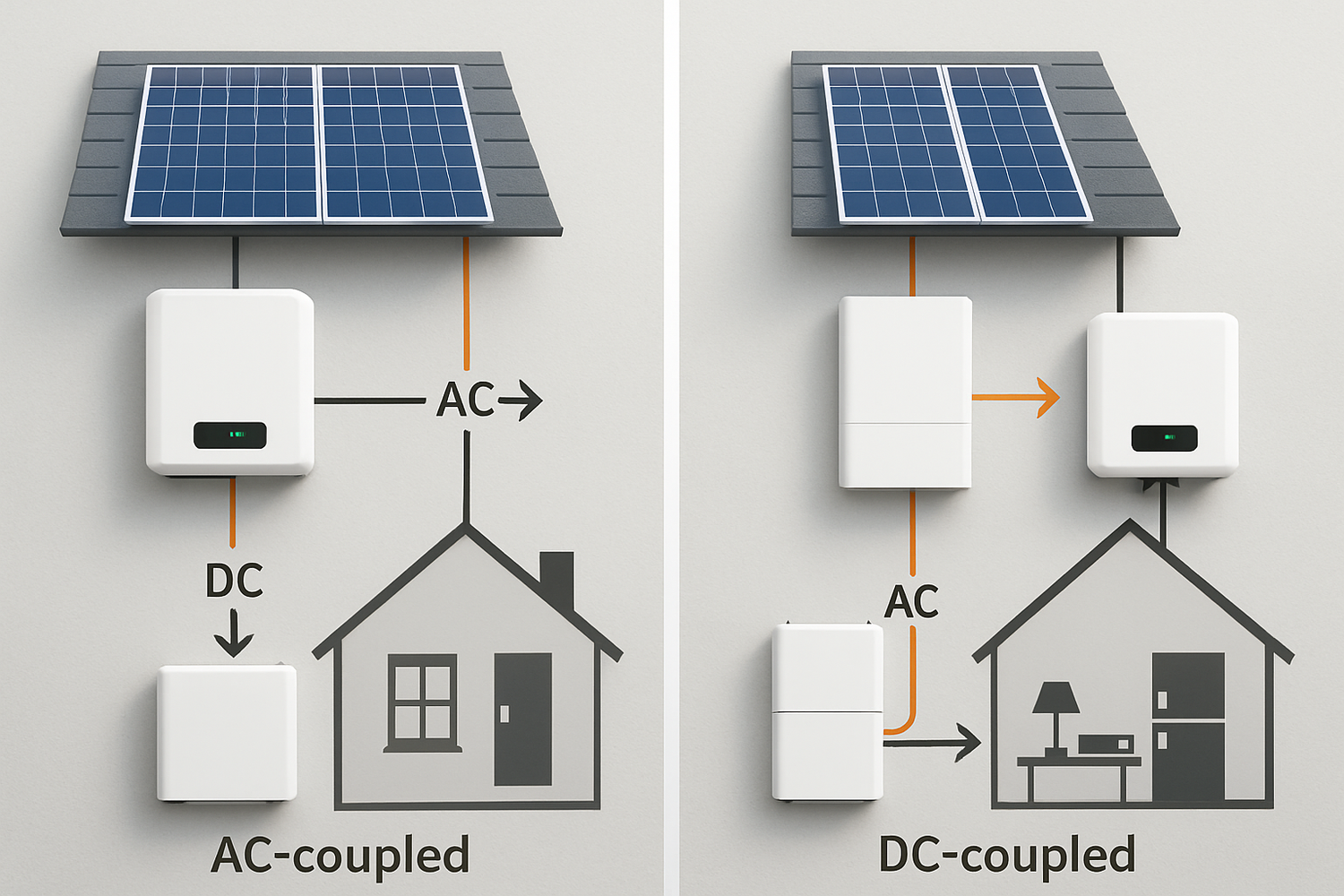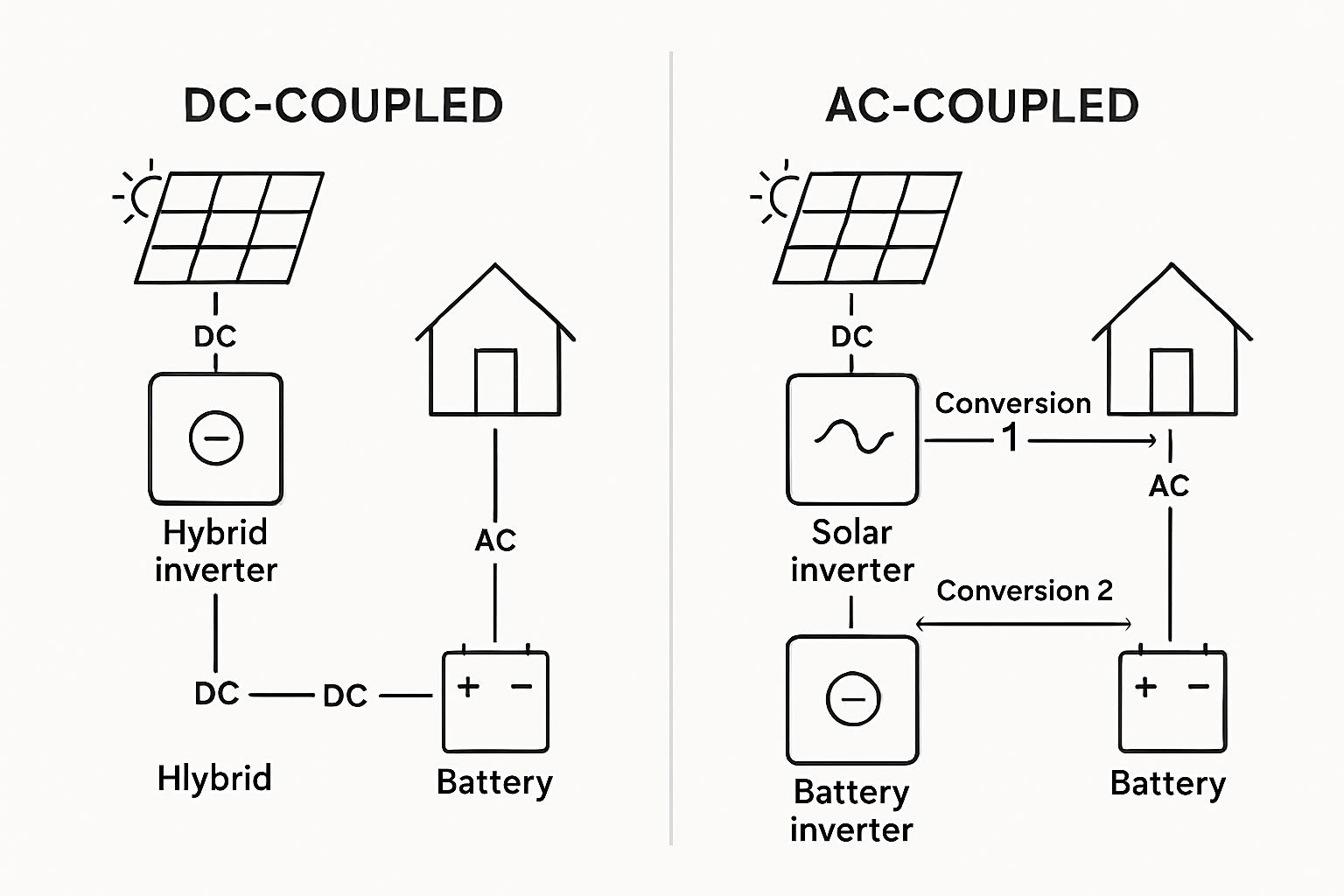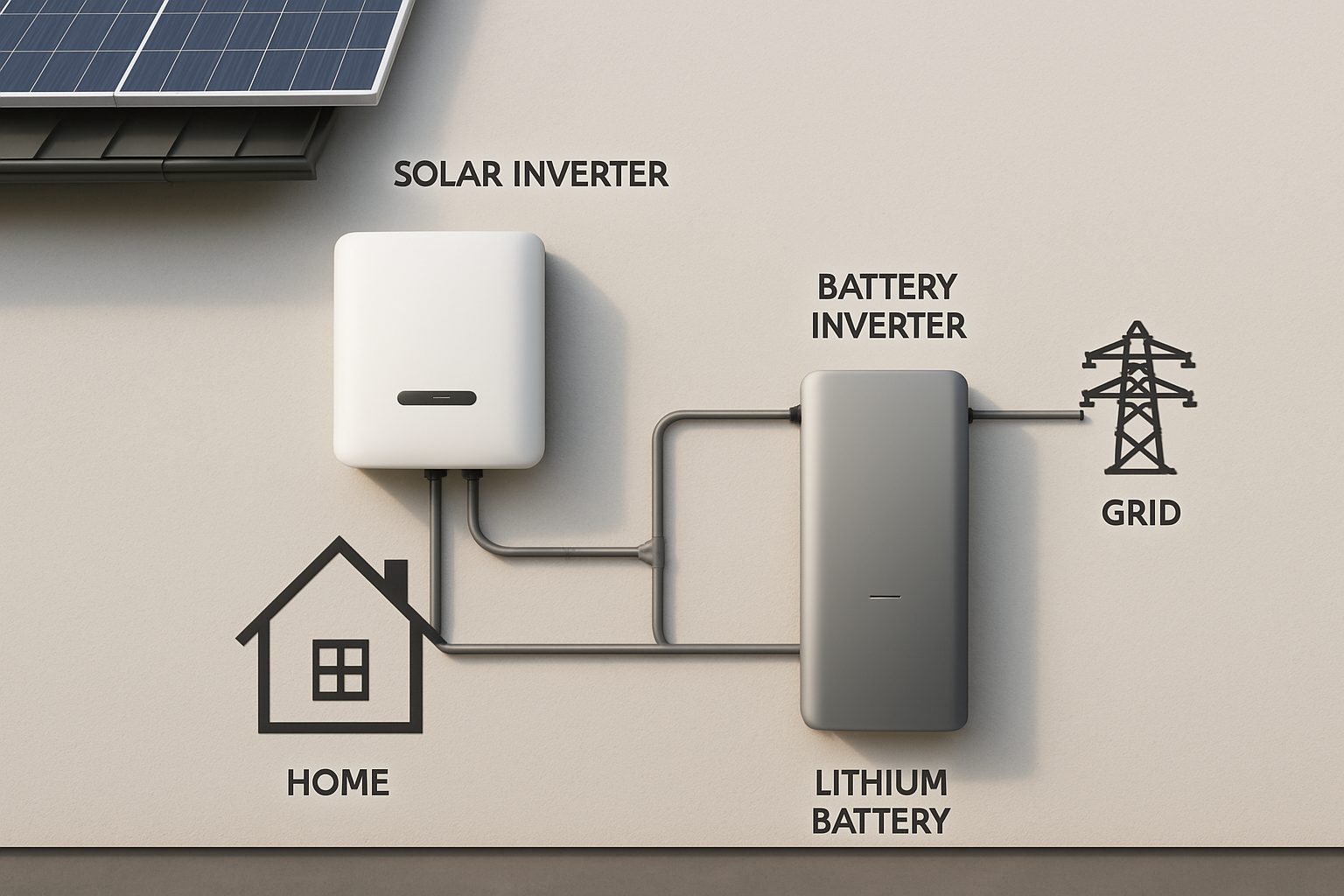Integrating battery storage with a solar panel system is a significant step toward energy independence. A critical aspect of this integration is understanding how electricity is converted and managed. Solar panels produce direct current (DC), while our homes and the electrical grid use alternating current (AC). Batteries, like solar panels, store energy as DC. This fundamental difference necessitates a conversion process. This guide provides a thorough overview of converting AC to DC for storage systems, exploring the architectures, components, and considerations to help you make informed decisions.
The global demand for energy storage is rapidly increasing. The U.S. Energy Information Administration (EIA) projects that solar and battery storage will account for 81% of new U.S. electric-generating capacity in 2024. Specifically, battery storage capacity is expected to nearly double. This growth highlights the importance of efficient and reliable energy storage solutions. As a company with years of experience in the solar industry, specializing in lithium battery manufacturing and integrated energy storage systems (ESS), we have seen firsthand the technical nuances that determine a system's long-term performance and value.
Section 1: The Fundamentals of AC/DC Conversion in Energy Storage
At its core, an energy storage system's job is to save surplus energy for later use. The journey of that energy from solar panel to battery and then to your appliances involves several transformations. The efficiency of these transformations directly impacts how much of your generated solar power you can actually use.
1.1 What is the AC to DC Conversion Process?
AC power from the grid or a solar inverter cannot directly charge a battery. It must be converted back to DC. This process is called rectification. It typically involves a device, often part of a battery inverter or charger, that uses electronic components called diodes to change the direction of the current, transforming the alternating sine wave of AC into a steady flow of DC power suitable for battery storage. This conversion is a foundational step in systems where AC electricity is stored in a DC battery.
1.2 The Central Role of the Inverter
The inverter is the heart of any solar and storage system. A standard solar inverter converts DC electricity from solar panels into AC electricity for your home. However, when a battery is involved, the inverter's role becomes more complex. In some configurations, a second inverter or a more advanced "hybrid" inverter is needed. These devices are bidirectional, meaning they can convert DC to AC to power your home and also convert AC back to DC to charge the battery from the grid or from the solar panels' AC output. An inverter-charger combines these functions into a single unit, managing the flow of energy between panels, battery, home, and grid.
Section 2: System Architectures: AC-Coupled vs. DC-Coupled Systems
When adding a battery to a solar installation, the system is designed using one of two main architectures: AC-coupling or DC-coupling. The term "coupling" refers to how the battery is connected to the solar system—either on the AC side or the DC side of the solar inverter. This choice has significant implications for system efficiency, cost, and installation complexity.
2.1 AC-Coupled Systems Explained
In an AC-coupled system, the solar panels are connected to their own grid-tied inverter, which converts DC to AC. This AC power can be used by the home, sent to the grid, or sent to a separate battery inverter. To charge the battery, this battery inverter converts the AC power back to DC. When the home needs power from the battery, the battery inverter converts the DC energy back to AC.
Advantages of AC-Coupling:
- Flexibility and Retrofitting: AC-coupling is often the simplest and most cost-effective way to add battery storage to an existing grid-tied solar system. The battery system can be installed with minimal changes to the existing solar setup.
- Independent Operation: The solar panels and the battery operate independently, each with its own inverter. This can offer a degree of redundancy; if one inverter fails, the other part of the system may continue to function.
Disadvantages of AC-Coupling:
- Lower Round-Trip Efficiency: The primary drawback is the multiple energy conversions. Solar DC power is converted to AC, then back to DC for battery storage, and finally back to AC for use. Each conversion incurs energy loss, resulting in a lower overall round-trip efficiency, typically around 90-94%. For every 10 kWh of solar energy sent to the battery, you might only get 9 kWh of usable energy.
For those with an existing solar array, understanding these trade-offs is key. You can learn more about the process in Retrofit AC vs. Native DC Energy Storage Solutions: Which is Best?.
2.2 DC-Coupled Systems Explained
In a DC-coupled system, DC power from the solar panels flows directly to a charge controller, which manages the charging of the battery. Both the solar panels and the battery are connected to a single, sophisticated hybrid inverter. This inverter handles both charging the battery with DC power and converting DC power (from either the panels or the battery) into AC power for the home.
Advantages of DC-Coupling:
- Higher Efficiency: The main advantage is superior efficiency. Since the solar energy goes directly to the battery in DC form, there are fewer conversion steps. This results in a higher round-trip efficiency, often up to 98%. This efficiency is a core argument explored in Unlock Peak Efficiency: The Case for a DC-Coupled LiFePO4 Battery.
- Cost-Effective for New Installations: For new solar-plus-storage installations, a DC-coupled system can be more economical as it requires only one hybrid inverter instead of two separate inverters.
- Clipping Recapture: DC-coupled systems can capture excess solar energy that would otherwise be "clipped" or lost by the inverter when the solar array's production exceeds the inverter's capacity.
Disadvantages of DC-Coupling:
- Installation Complexity: Retrofitting a DC-coupled system into an existing solar installation can be more complex and costly, as it often requires replacing the original solar inverter with a hybrid model.
2.3 Comparison Table: AC-Coupling vs. DC-Coupling
| Feature | AC-Coupled System | DC-Coupled System |
|---|---|---|
| Best For | Retrofitting existing solar systems | New solar-plus-storage installations |
| Round-Trip Efficiency | Lower (90-94%) due to multiple conversions | Higher (up to 98%) due to fewer conversions |
| Key Components | Solar Inverter + Battery Inverter | Single Hybrid Inverter |
| Installation Complexity | Simpler to add to existing systems | More complex for retrofits, simpler for new builds |
| Cost | Can be more cost-effective for retrofits | Generally lower equipment cost for new systems |
Section 3: Key Components and Practical Considerations
Building a reliable AC to DC storage system requires high-quality components designed to work together seamlessly. From the battery chemistry to the inverter's capabilities, every part plays a role in the system's overall performance and longevity.
3.1 Choosing the Right Battery: The LiFePO4 Advantage
The battery is the cornerstone of your storage system. Lithium Iron Phosphate (LiFePO4) batteries have become the standard for residential energy storage due to their superior safety, long cycle life, and thermal stability compared to other lithium-ion chemistries. At ANERN, our focus on LiFePO4 battery manufacturing ensures that our home energy storage systems are built on a foundation of safety and reliability. These batteries can withstand the daily charge and discharge cycles of a solar storage application for many years, providing a dependable source of power.
3.2 Inverter Selection and System Sizing
Selecting the right inverter is crucial. For new systems, a hybrid inverter that can manage both solar and battery connections offers a streamlined, high-efficiency solution. For retrofits, adding a dedicated battery inverter for an AC-coupled setup is a practical approach. ANERN's solar inverters are designed for high performance and seamless integration, whether you are building a new off-grid solar solution or upgrading an existing system. Proper system sizing is also critical. An undersized battery won't meet your needs during an outage, while an oversized one represents an unnecessary expense. A detailed cost analysis is essential, a topic covered in depth in AC to DC Solar Storage Conversion: A Detailed Cost Analysis.
3.3 Installation and Safety
Proper installation is paramount for both safety and performance. Energy storage systems involve high voltages and complex wiring that should only be handled by qualified professionals. The U.S. Department of Energy provides comprehensive guidance on energy storage safety to help ensure systems are deployed correctly. Adhering to local electrical codes and utility interconnection requirements is mandatory. Avoiding common pitfalls is crucial for a successful upgrade, as detailed in 5 Costly Mistakes in an AC to DC Home Battery Storage System Upgrade.
Your Path to Energy Independence
Understanding the conversion of AC to DC is fundamental to designing an effective and efficient energy storage system. The choice between an AC-coupled and a DC-coupled architecture depends heavily on your specific situation—whether you are installing a brand-new system or retrofitting an existing one. While DC-coupled systems offer higher efficiency, AC-coupled solutions provide a practical and flexible upgrade path for millions of existing solar owners.
By focusing on high-quality components like advanced LiFePO4 batteries and reliable hybrid inverters, you can build a system that maximizes your solar investment and provides dependable power for years to come. Our integrated ESS solutions are designed to provide a reliable, scalable path to achieving energy independence, whether for a home, farm, or off-grid cabin.
Disclaimer: This article is for informational purposes only and does not constitute financial or legal advice. Please consult with a qualified professional before making any investment decisions or system installations.





Leave a comment
All comments are moderated before being published.
This site is protected by hCaptcha and the hCaptcha Privacy Policy and Terms of Service apply.